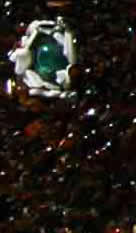THE PAUL AND MATILDA WEGNER GROTTO

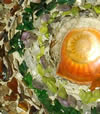
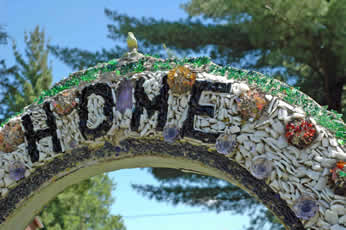
Detail of the Home "Gateway" studded with glass rosettes and topped by a yellow ceramic bird at the Paul and Matilda Wegner Grotto.
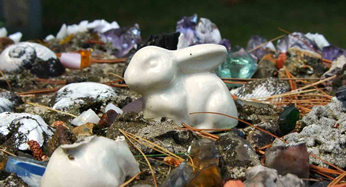
Detail of River Rock Fence at the Paul and Matilda Wegner Grotto made of shattered glass, shells, broken crockery and a number of curiosities, including a tiny ceramic rabbit fully intact.
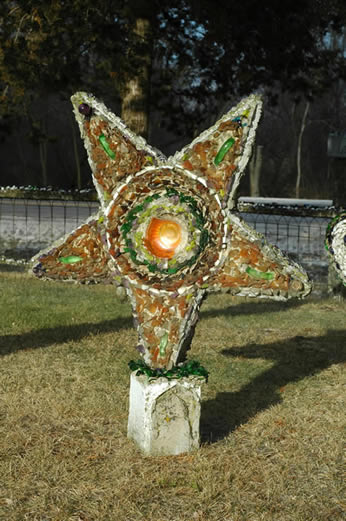
The Paul and Matilda Wegner Grotto near Cataract was built primarily by Paul with some help from his wife Matilda, both of whom emigrated from Germany in 1885 and settled in southwestern Wisconsin. In 1889 they purchased a farm near the village of Cataract where the couple farmed and raised five children. In 1916 they left the farm operation to a son and Paul operated a garage in nearby Bangor. When he retired in 1927, the couple returned to the farm in summers.
"The artists were definitely inspired by the European grotto aesthetic and grotto environments that were being constructed in the Midwest, particularly the Dickeyville Grotto in Wisconsin. This grotto was widely publicized throughout the state and all these artists where known to have visited or been inspired by stories and photos of the grotto," says Umberger (see sidebar: Grottos of the Midwest).
"It was a time when people took trips to visit the grotto and many would have attended its grand opening. That was the popular culture of the day, much like television and the internet is today," she adds.
In fact, when Paul and Matilda visited the wondrous Dickeyville Grotto in 1929 they became "transfixed" and Paul became inspired to begin a "retirement project." At the farm, he immediately set to work building a concrete environment even though he had no artistic training. He copied the Dickeyville technique of studding concrete with glass and ceramic objects. He first built a decorative fence around the property with a concrete archway that spells out the word "Home" in crushed black glass.
"A common element is that almost all concrete environmental builders were men who did hard work with their hands all their lives, such as farming and logging. And so it's not surprising that when they wanted to express themselves, they took on laborious and physically challenging projects and built such spectacular environments," says Yoho. "The Wegner grotto though involved Paul's wife."

The Wegners' imaginative environment of more than 40 statues evolved from personal vision. Paul keep on building until his death in 1937 and thereafter his wife worked on the Grotto until her death in 1942. The result is a remarkable and fantastic grotto and sculptural garden: It is a site of color and light decorated with thousands of glittering glass pieces, broken china and porcelain figures, interspersed with other curiosities, such as seashells, Indian arrowheads and shell casings.
The grotto contains, among other statues, a giant reproduction of the Wegners' 50th anniversary cake (their last creation), an American flag, glass-encrusted bird houses and the steamship, Bremen. Their Lutheran ecumenical bent is played out in a Prayer Garden, Peace Monument and Glass Church, all of which served as places for quiet reflection, wedding ceremonies, public preaching and community gatherings.
The Wegners' patriotism is expressed via a glass encrusted "Gold Star" to commemorate those who lost one or more soldiers in World War I, in which the Wegners' lost a son. Their Grotto was owned by the family until 1986 when the Kohler Foundation purchased the site. Sculptural restoration included extensive stabilization and surface repair and landscape clearing to re-establish the original environment. Gifted to Monroe County in 1987, the Wegner Grotto is a stunning sight amidst the quiet countryside.







